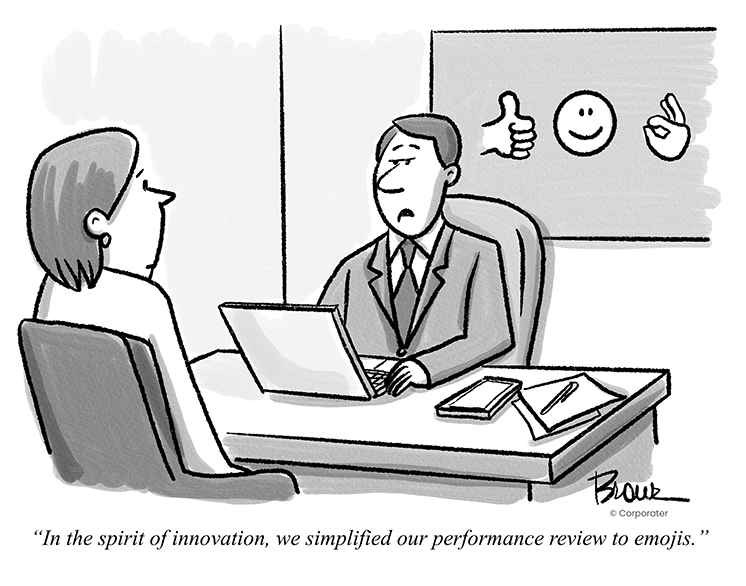
Do you drive an Edsel? When you get home after a long day at work, do you sometimes have to adjust the antenna on your roof before you can enjoy one of the three channels on your black and white TV? Are your kids fighting over the family hula hoop? We doubt very much that you do any of those things, all hallmarks of the 1950s. But, the odds are very good that your company is doing one thing today the same way they did sixty years ago — conducting performance reviews. For the vast majority of organizations, the annual performance review process is still an archaic, painful, time-consuming, and ultimately ineffective process during which a supervisor and employee struggle through assigning grades on a fixed rating scale.
The process is fraught with problems and inefficiencies. First there is the sheer time commitment. Companies spend untold hours on reviews (Deloitte estimated the task consumed about two million hours of firm time a year); despite that fact that almost 60 percent of managers say it’s ineffective. There is also the problem of biases, from both the supervisor and employee side, that leads to confusion and frustration. Finally, we must recognize that traditional reviews focus on goals set solely in the past which, because of the rapid pace of change, may be largely irrelevant when review time comes along. Try these tips to breathe new life into your performance review process.
- Consider something new The aforementioned Deloitte is just one of a fast-growing cadre of high-profile companies abandoning the antiquated review for novel methods of assessing employee performance. “Ratingless” reviews, which are basically what you’d surmise from that title — more discussions than critical assessments — are one growing method. Others are turning to the crowd, using 360-degree feedback to help employees adapt, acquire new skills, and cope effectively with change.
- Introduce more frequent feedback One very positive development is the change taking place in many leading organizations from out-of-date, end-of-year performance reviews to real-time tracking, coaching, and mentoring that seeks to constantly shape an employee’s development. Instead of heaping praise or criticism in one bureaucratic serving at year-end, organizations encourage regular feedback, facilitating an ongoing dialog designed to enhance skill development and minimize the risks associated with festering poor performance.
- Ensure you understand the purpose of the review In one study of performance reviews, 66 percent of respondents stated that the main purpose of the process is to decide on incentive compensation. A much smaller percentage suggested talent management as the primary goal. As Stephen Covey once admonished, “You don’t mess with people’s rice bowl.” Conflating talent management and incentive compensation, attempting to analyze one to inform the other is a recipe for confusion, skepticism, and resentment. Ensure the aims of your review process are clear to both the evaluator and the employee.
In his 2015 book, Work Rules, Laszlo Bock, the former Senior Vice President of People Operations at Google, has this to say about performance reviews: “Performance management as practiced by most organizations has become a rule-based bureaucratic process, existing as an end in itself rather than actually shaping performance. Employees hate it. Managers hate it. Even HR departments hate it.” It doesn’t have to be that way, however. By following the tips above, and maintaining a commitment to new and novel approaches to performance reviews, you can implement a process that works for everyone.

